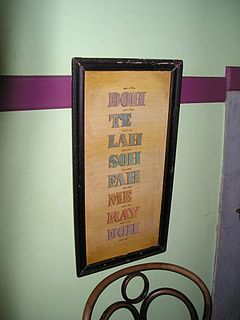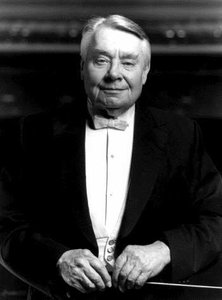
In speech science and phonetics, a formant is the spectral shaping that results from an acoustic resonance of the human vocal tract. However, in acoustics, the definition of a formant differs slightly as it is defined as a peak, or local maximum, in the spectrum. For harmonic sounds, with this definition, it is therefore the harmonic partial that is augmented by a resonance. The difference between these two definitions resides in whether "formants" characterise the production mechanisms of a sound or the produced sound itself. In practice, the frequency of a spectral peak can differ from the associated resonance frequency when, for instance, harmonics are not aligned with the resonance frequency. In most cases, this subtle difference is irrelevant and, in phonetics, formant can mean either a resonance or the spectral maximum that the resonance produces. Formants are often measured as amplitude peaks in the frequency spectrum of the sound, using a spectrogram or a spectrum analyzer and, in the case of the voice, this gives an estimate of the vocal tract resonances. In vowels spoken with a high fundamental frequency, as in a female or child voice, however, the frequency of the resonance may lie between the widely spaced harmonics and hence no corresponding peak is visible.

In musical notation, a key signature is a set of sharp, flat, and rarely, natural symbols placed together on the staff. Key signatures are generally written immediately after the clef at the beginning of a line of musical notation, although they can appear in other parts of a score, notably after a double barline.

In music, a note is the pitch and duration of a sound, and also its representation in musical notation. A note can also represent a pitch class. Notes are the building blocks of much written music: discretizations of musical phenomena that facilitate performance, comprehension, and analysis.
In music theory, a scale is any set of musical notes ordered by fundamental frequency or pitch. A scale ordered by increasing pitch is an ascending scale, and a scale ordered by decreasing pitch is a descending scale. Some scales contain different pitches when ascending than when descending, for example, the melodic minor scale.
In music, solfège or solfeggio, also called sol-fa, solfa, solfeo, among many names, is a music education method used to teach aural skills, pitch and sight-reading of Western music. Solfège is a form of solmization, and though the two terms are sometimes used interchangeably, the systems used in other music cultures such as swara, durar mufaṣṣalāt and Jianpu are discussed in their respective articles.

Gregorian chant is the central tradition of Western plainchant, a form of monophonic, unaccompanied sacred song of the Roman Catholic Church. Gregorian chant developed mainly in western and central Europe during the 9th and 10th centuries, with later additions and redactions. Although popular legend credits Pope Gregory I with inventing Gregorian chant, scholars believe that it arose from a later Carolingian synthesis of Roman chant and Gallican chant.
Relative pitch is the ability of a person to identify or re-create a given musical note by comparing it to a reference note and identifying the interval between those two notes. Relative pitch implies some or all of the following abilities:

Shape notes are a music notation designed to facilitate congregational and community singing. The notation, introduced in late 18th century England, became a popular teaching device in American singing schools. Shapes were added to the note heads in written music to help singers find pitches within major and minor scales without the use of more complex information found in key signatures on the staff.

In music, a pitch class (p.c. or pc) is a set of all pitches that are a whole number of octaves apart, e.g., the pitch class C consists of the Cs in all octaves. "The pitch class C stands for all possible Cs, in whatever octave position." Important to musical set theory, a pitch class is, "all pitches related to each other by octave, enharmonic equivalence, or both." Thus, using scientific pitch notation, the pitch class "C" is the set
Ear training or aural skills is a skill by which musicians learn to identify, solely by hearing, pitches, intervals, melody, chords, rhythms, and other basic elements of music. The application of this skill is analogous to taking dictation in written/spoken language. As a process, ear training is in essence the inverse of sight-reading, the latter being analogous to reading a written text aloud without prior opportunity to review the material. Ear training is typically a component of formal musical training and is a fundamental, essential skill required in music schools.

In music, letter notation is a system of representing a set of pitches, for example, the notes of a scale, by letters. For the complete Western diatonic scale, for example, these would be the letters A-G, possibly with a trailing symbol to indicate a half-step raise--(a sharp♯), or a half-step lowering. This is the most common way of specifying a note in speech or in written text in English or German. In some European countries H is used instead of B, and B is used instead of B♭.
The numbered musical notation, is a musical notation system widely used in music publications in China. It dates back to the system designed by Pierre Galin, known as Galin-Paris-Chevé system. It is comparable to the Gongche notation from the Tang Dynasty.
The performance of Sacred Harp music involves customary styles that are not expressed in the musical notation itself. The phrase "performance practice" is used in a broad way: Sacred Harp singing is participatory, not audience-oriented, and thus is not really "performed" in a traditional sense.
Canntaireachd is the ancient Scottish Highland method of notating Piobaireachd, also spelt Pibroch, referred to more generally as Ceol Mòr, an art music genre primarily played on the Great Highland Bagpipes. These long and complex theme and variation tunes were traditionally transmitted orally by a combination of definite vocable syllables. In general, the vowels represent the notes, and consonants the grace notes, but this is not always the case, as the system has inconsistencies and was not fully standardized.
Svara or swara is a Sanskrit word that connotes a note in the successive steps of the octave. More comprehensively, it is the ancient Indian concept about the complete dimension of musical pitch.
Notation plays a relatively minor role in the oral traditions of Indonesian gamelan but, in Java and Bali, several systems of gamelan notation were devised beginning at the end of the 19th century, initially for archival purposes.
The Kodály method, also referred to as the Kodály concept, is an approach to music education developed in Hungary during the mid-twentieth century by Zoltán Kodály. His philosophy of education served as inspiration for the method, which was then developed over a number of years by his associates. In 2016, the method was inscribed as a UNESCO Intangible Cultural Heritage.

Tonic sol-fa is a pedagogical technique for teaching sight-singing, invented by Sarah Ann Glover (1785–1867) of Norwich, England and popularised by John Curwen who adapted it from a number of earlier musical systems. It uses a system of musical notation based on movable do solfège, whereby every tone is given a name according to its relationship with other tones in the key: the usual staff notation is replaced with anglicized solfège syllables or their abbreviations. "Do" is chosen to be the tonic of whatever key is being used. The original solfège sequence started with "Ut" which later became "Do".

Diatonic and chromatic are terms in music theory that are most often used to characterize scales, and are also applied to musical instruments, intervals, chords, notes, musical styles, and kinds of harmony. They are very often used as a pair, especially when applied to contrasting features of the common practice music of the period 1600–1900.












